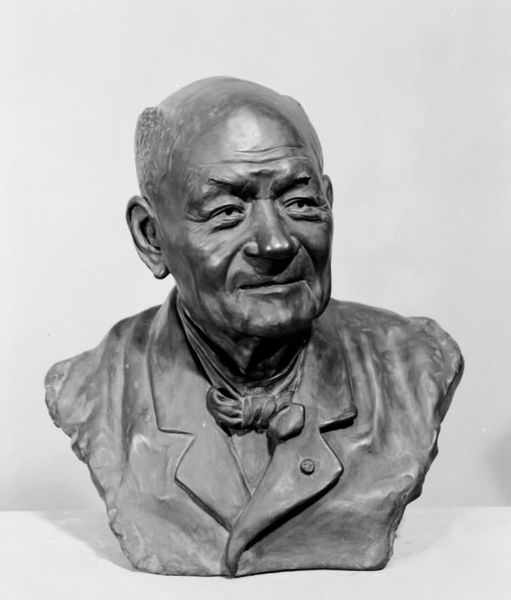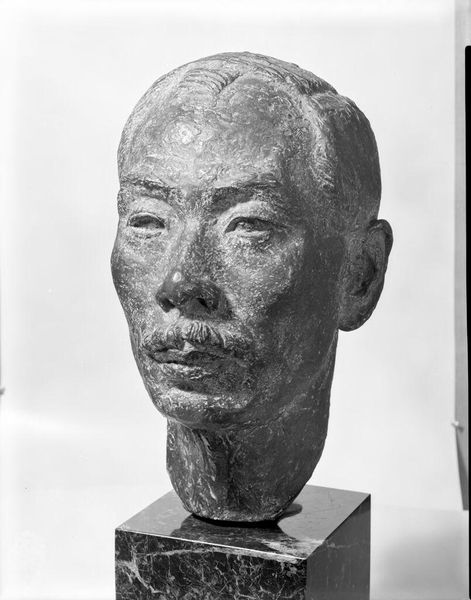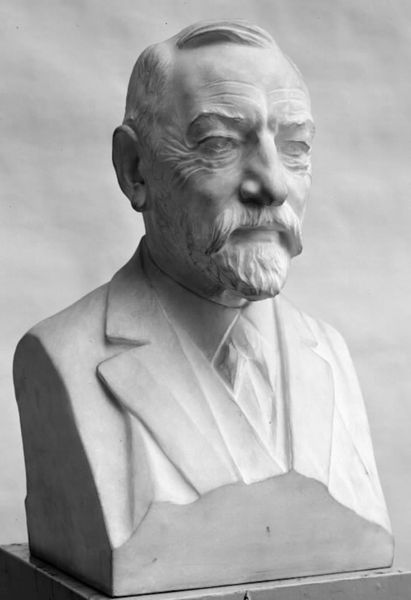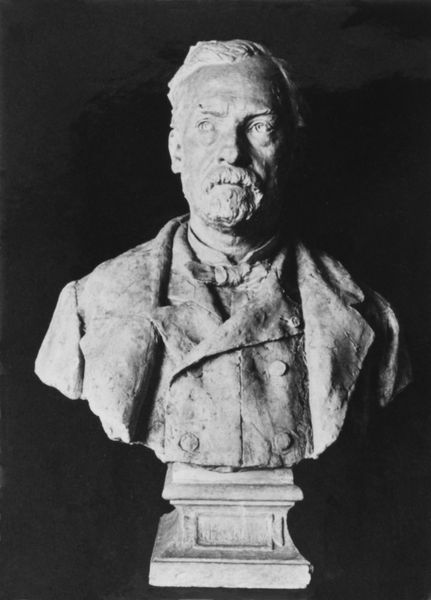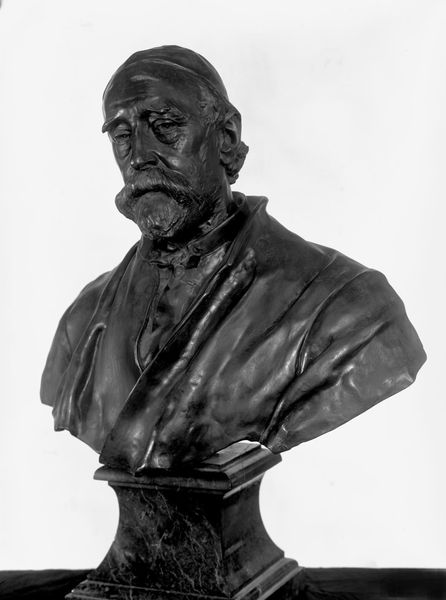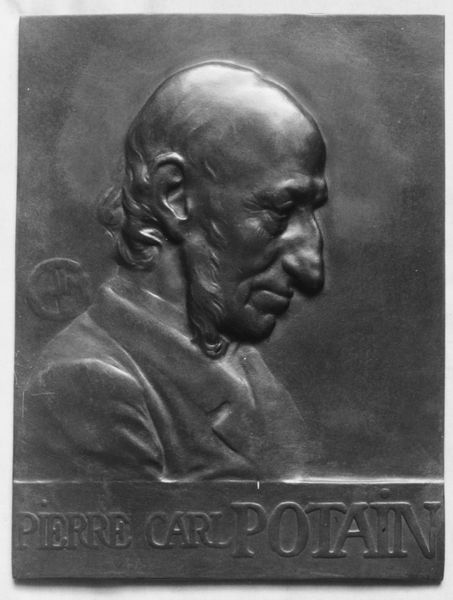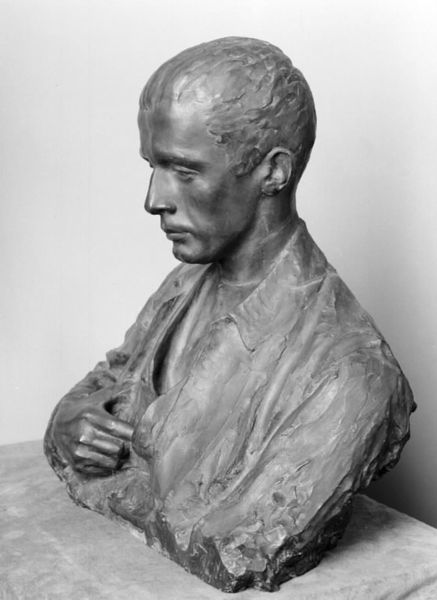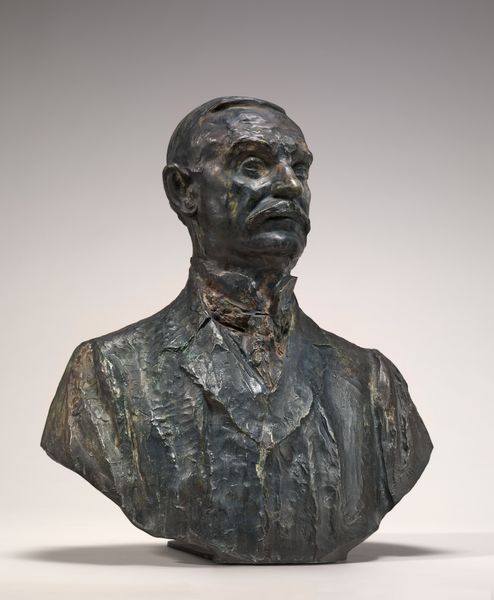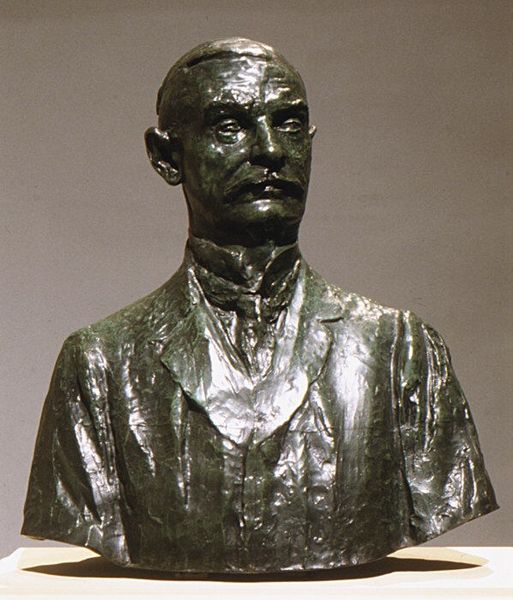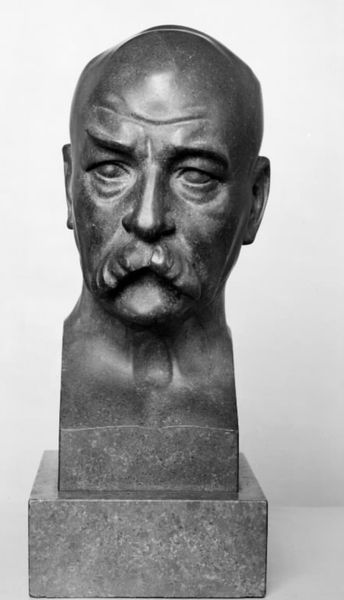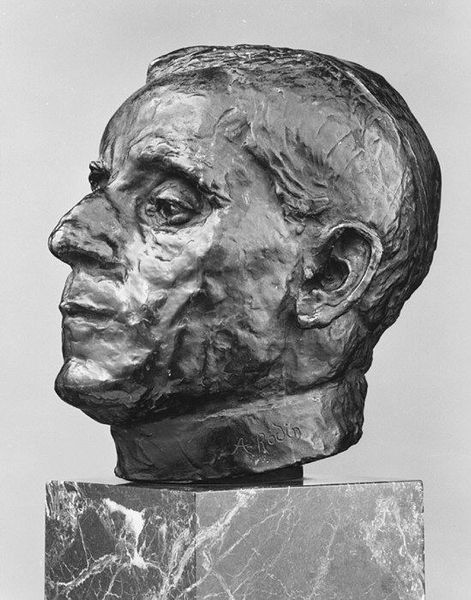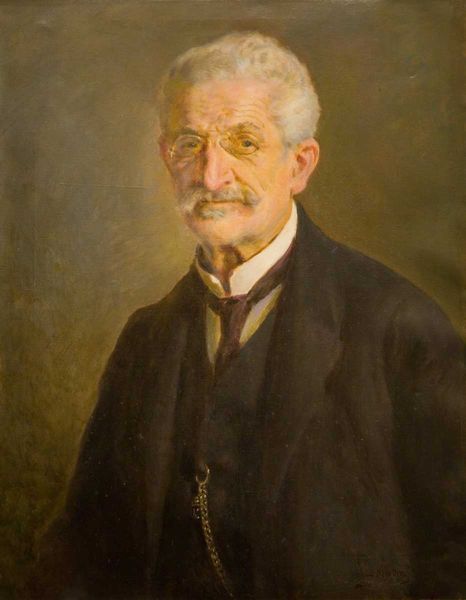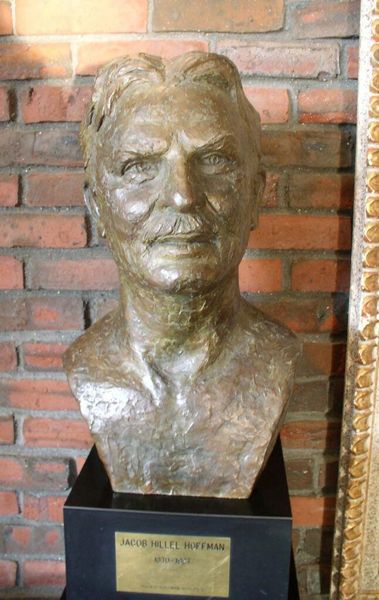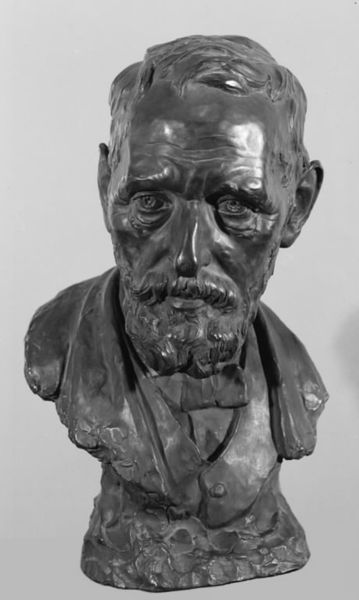
bronze, sculpture
#
portrait
#
portrait
#
bronze
#
male portrait
#
sculpture
Dimensions: 45.4 cm (height) (Netto)
Curator: Standing before us is Augusta Antonette Finne’s 1896 bronze sculpture of Ivar Aasen, aptly titled "Forfatteren Ivar Aasen", which, in English translates to "The Author Ivar Aasen," currently housed at the SMK, Statens Museum for Kunst. Editor: It feels stoic. The monochrome palette definitely contributes to that gravity. I'm immediately drawn to the details etched around the eyes—years distilled into fine lines on bronze. Curator: Absolutely. There’s a compelling tension between Aasen's role as an author and the tactile qualities of sculpture, you know? Finne captures not just his likeness but also his profound contribution to Norwegian identity. I mean, Aasen essentially constructed a whole language! Editor: It’s about the embodiment of language itself. Bronze, a solid and enduring material, is used to represent this author. I am thinking a lot about how the composition reflects an upward gaze, or what seems like a faraway vision. It signifies an aspiration to formal perfection in a nascent nation. Curator: Precisely. I feel this captures so well, how through sheer will and imagination he built something tangible and enduring. I wonder, could we say the cool detachment I feel from this sculpture belies an extraordinary fire within him? Editor: Fire subdued, perhaps. More like a deep, smoldering commitment reflected in his even-keeled gaze, steady against any opposition. There is such an evocative contrast in the folds of the clothing and that smoothly bald head! The bust grounds this sense of determination in a starkly material and, may I say, patriarchal reality. Curator: Definitely agree! Now when you view Finne's creation—a solid and permanent form made to remember someone for years to come, you find that so many things get questioned about Norwegian heritage! Editor: Well, considering the piece as a totality of its parts—and even thinking of the void surrounding the piece—makes it much easier to conceive Aasen’s impact in those complex times and his cultural role nowadays.
Comments
No comments
Be the first to comment and join the conversation on the ultimate creative platform.
